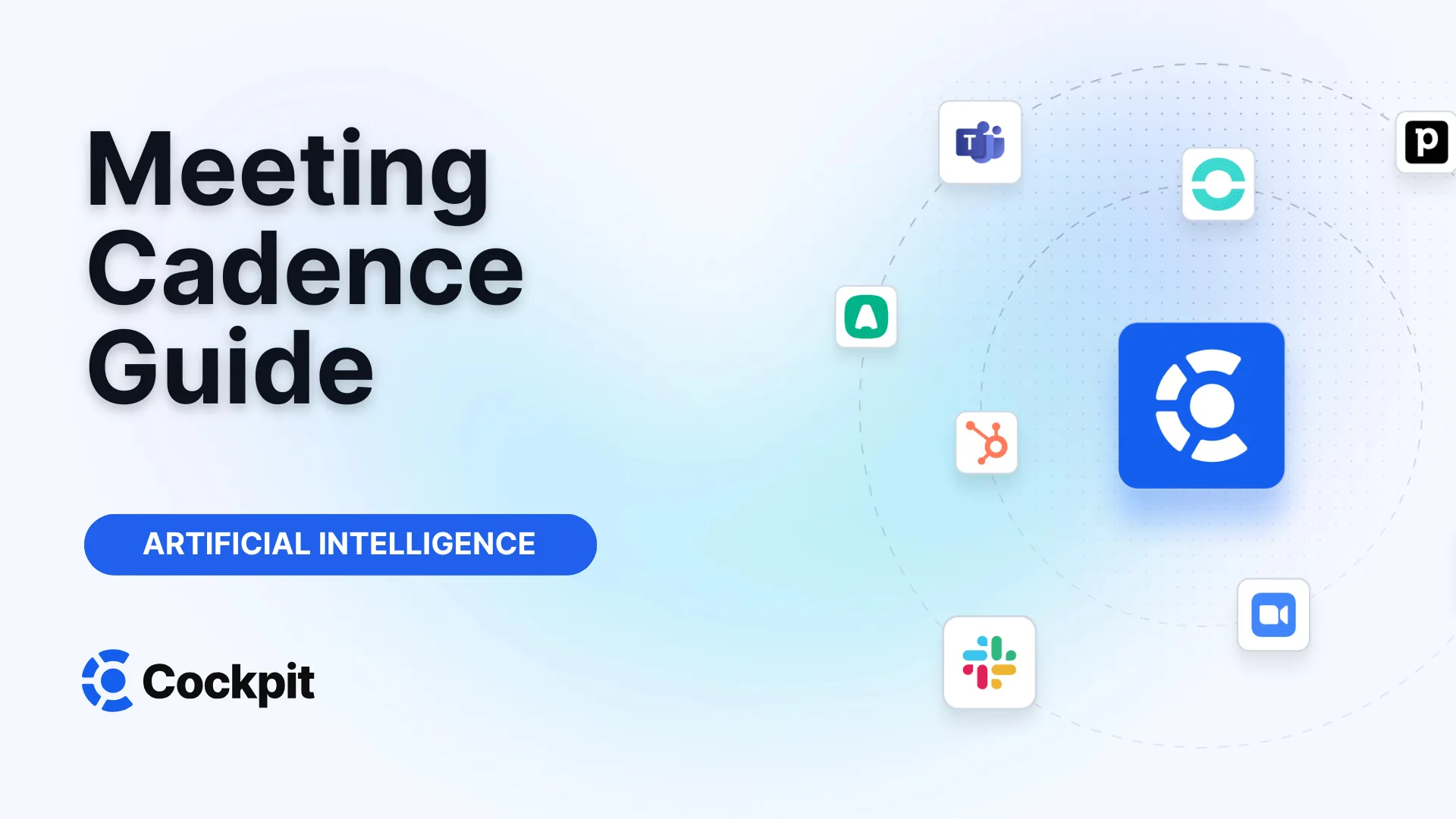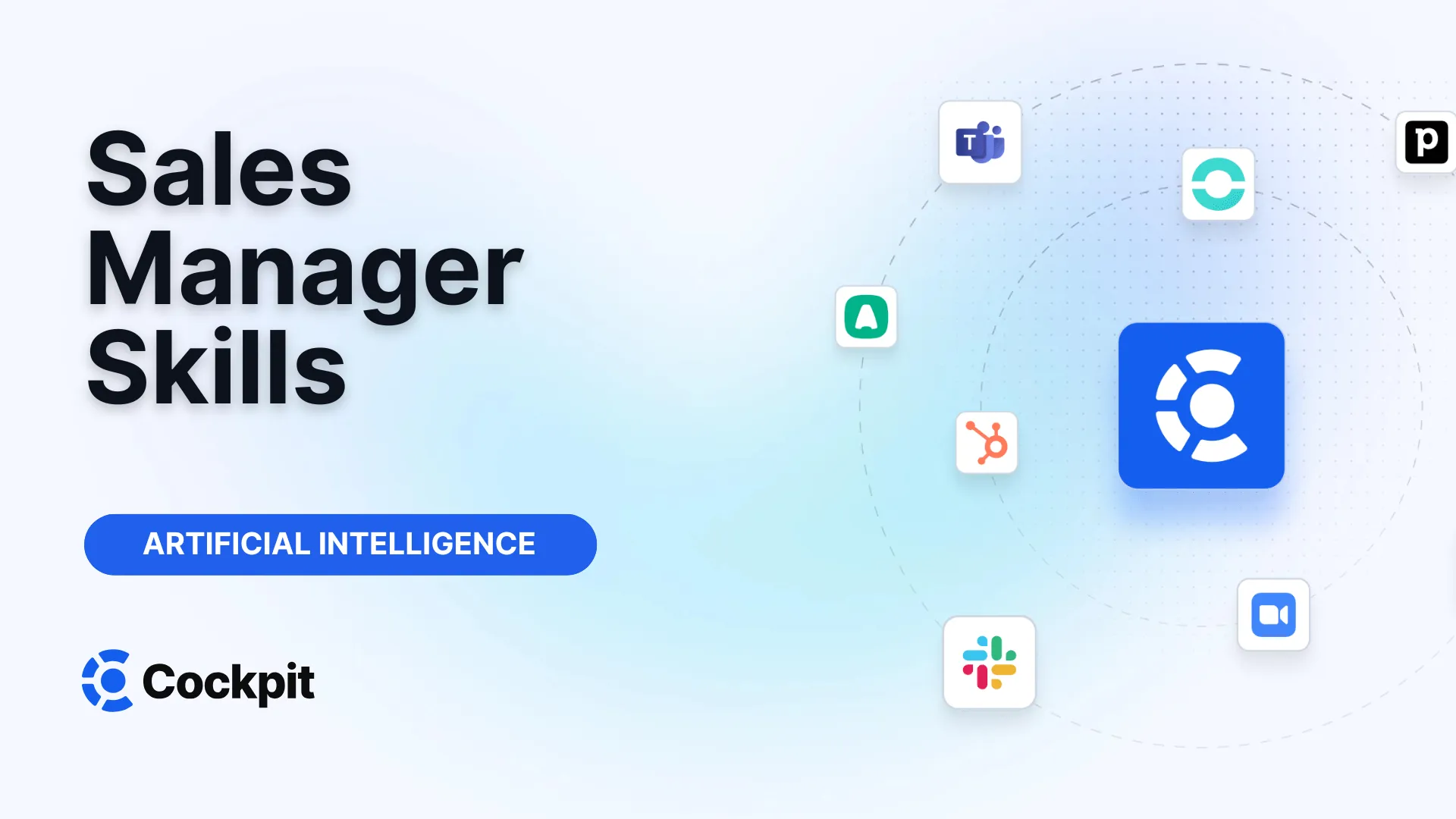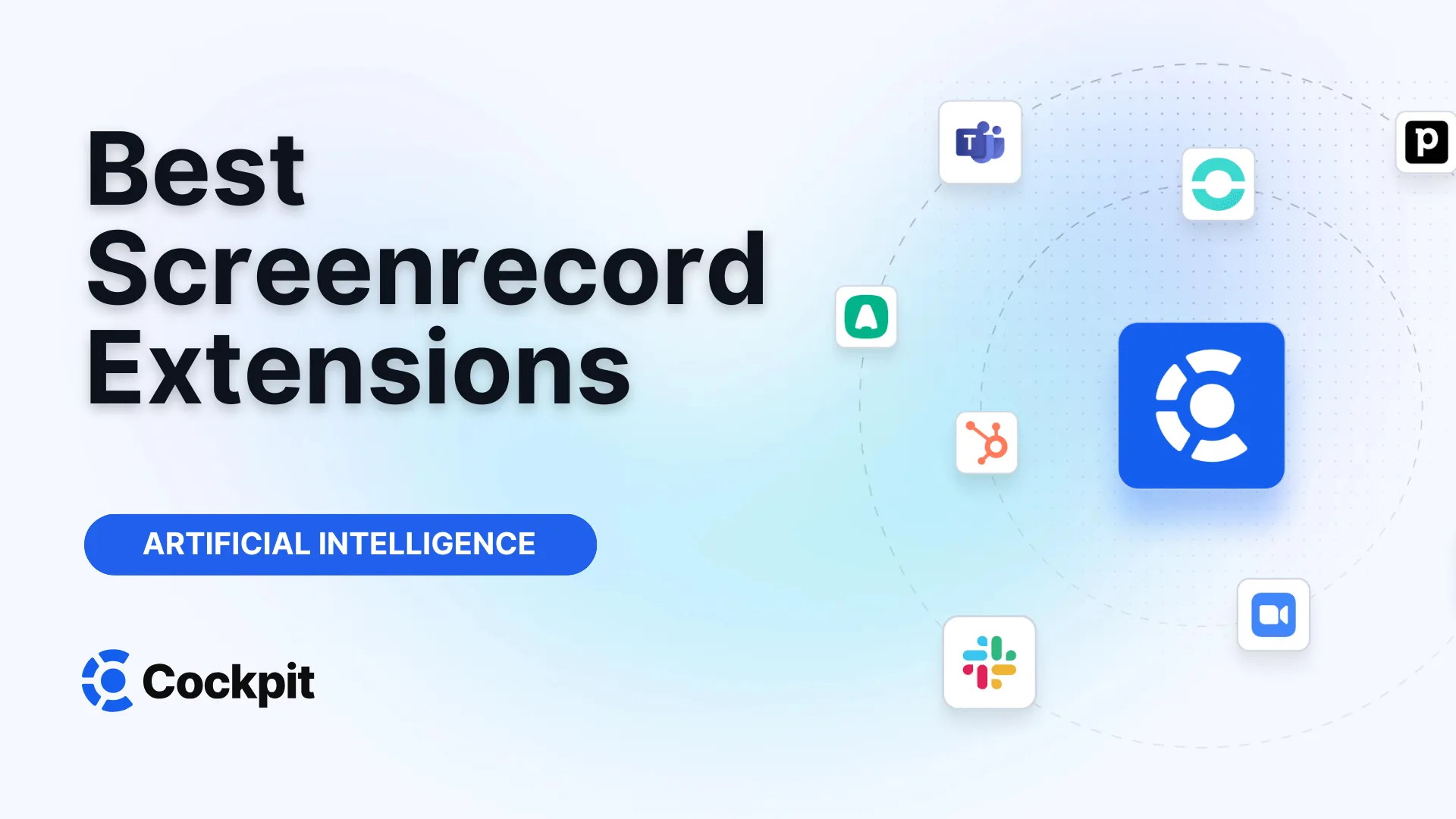Optimize your sales force in just a few clicks

Thousands of sales teams boost their performance with Cockpit. Why shouldn't you?
Explore CockpitSummary
Are your days a nonstop sequence of meetings, leaving little room for deep work? Or conversely, do you feel your team is losing momentum due to a lack of synchronization? Finding the right balance can sometimes seem impossible. What if the solution didn’t lie in the number of meetings, but in their rhythm?
How can you transform these appointments, often seen as a constraint, into true engines of productivity and cohesion? The key lies in a simple but powerful concept: meeting cadence. Mastering this rhythm ensures that every interaction is relevant, efficient, and truly contributes to moving projects forward. It is the art of creating a tempo that energizes your team instead of exhausting it.
What Is a Meeting Cadence?
The meeting cadence simply refers to the rhythm at which an team’s recurring meetings are organized. It defines their frequency (daily, weekly, monthly), duration, and format. Think of it as a metronome for your team: a regular pattern of gatherings that structures collaboration, maintains alignment, and propels work forward. Far from being a rigid calendar, a well-thought-out cadence is a flexible structure that provides predictability and efficiency.
The primary goal is to ensure the team remains synchronized on common objectives, information flows smoothly, and the work dynamic is maintained. A good cadence allows you to regularly address fundamental questions:
- What have we accomplished since our last meeting?
- What are the next goals to achieve?
- What obstacles are blocking our progress and how can we overcome them?
A poorly calibrated cadence can have negative consequences. Meetings held too frequently cause frustration, wasted time, and a feeling of micromanagement. Conversely, meetings too far apart can lead to misalignment, project delays, and a sense of isolation, especially for remote or hybrid teams.
The Benefits of a Well-Defined Meeting Cadence
Implementing a thoughtful meeting rhythm is not just a matter of organization; it is a true strategic lever. The benefits are felt in both collective performance and individual well-being.
Improving Productivity and Team Dynamics
When meetings are predictable and efficient, team members can better organize their work time. They know a dedicated moment is scheduled for synchronization, allowing them to focus on their tasks without constant interruptions. This structure reduces communication "noise" (relentless emails, instant messages) and frees mental space for deep work.
An appropriate cadence also avoids the trap of meetings that drag on endlessly. If participants know there is a weekly slot to discuss strategic topics, they will be less likely to turn a quick follow-up into an improvised brainstorming session. The result is a time saving for everyone and enhanced efficiency.
Strengthening Cohesion and Communication
Recurring meetings are rituals that bond a team. They create a sense of belonging and connect each individual to the collective mission. It is an opportunity to celebrate wins, recognize efforts, and solve problems together. On a human level, the benefits are multiple:
- Increased trust: Regular and transparent interactions strengthen bonds among collaborators.
- Sense of belonging: Everyone feels valued and part of the shared project.
- Appropriate sense of urgency: Regular check-ins maintain positive momentum and focus on objectives.
A good cadence transforms meetings from an administrative obligation into a real tool for cohesion. It ensures the group stays aligned, execution flows smoothly, and next steps are clear to everyone. It is the pulse that sets the rhythm of team life.
Ensuring Effective Project Follow-Up
Regularity is the key to momentum. A well-established cadence guarantees constant monitoring of project progress. It allows you to document decisions, assign concrete actions, and ensure nothing slips through the cracks. The expected results of a good cadence are tangible:
- A clear vision of who is doing what.
- Prompt help to resolve blockers.
- Visibility on successes and setbacks.
- Documented decisions and action plans.
How to Choose the Ideal Meeting Cadence for Your Team?
There is no universal magic formula. The perfect cadence depends on various factors: the nature of your team, its objectives, the complexity of projects, and your company culture. Before setting a schedule, it is essential to ask the right questions.
Here is a list of questions to consider when defining your strategy:
- What is the primary objective of this meeting? (Information sharing, decision-making, brainstorming, follow-up, etc.)
- Could this meeting be held asynchronously? (Would an email, Slack message, or shared report suffice?)
- Is the topic urgent or high priority? A critical project with a looming deadline will require higher frequency.
- Do our current meetings often exceed allotted time? If yes, it may be more effective to make them shorter but more frequent.
- Are we lacking topics to discuss during our meetings? An empty agenda is a sign that meetings are too close together.
- How many people will be attending? For large groups, it may be wise to split the meeting into smaller targeted sessions.
Expert Advice
Do not seek perfection right away. Adopt an iterative approach. Announce to your team that you will test a new cadence for a few weeks. Collect their feedback and be ready to adjust. The best cadence is one that evolves with your team’s needs.
Considering the Type of Meeting
Meeting type is the most decisive factor in choosing the right frequency. Below is a breakdown of the most common cadences according to their objectives.
Cadence TypeFrequencyMain ObjectivesExample MeetingsTypical DurationDailyEvery dayQuick synchronization, removing blockers, alignment on daily tasks.Daily Stand-up, Daily Huddle, Team Check-in.10-20 minutesWeeklyOnce a weekProgress tracking, planning the upcoming week, problem solving.Team Meeting, 1-on-1 (manager/employee), Project Check-in.45-90 minutesMonthlyOnce a monthStrategic alignment, sharing global information, performance review.All-hands Meeting, Management Meeting, Sales Review.1-3 hoursQuarterlyOnce a quarterLong-term objective review, strategic planning, high-level reporting.Business Review (QBR), Board Meeting.3 hours to one day
- Daily meetings: Designed to be brief and dynamic. The daily stand-up or daily huddle is a classic of agile teams but adapts to many contexts. The goal is simple: each member quickly answers three questions (What did I do yesterday? What will I do today? What blockers do I have?).
- Weekly meetings: This is the most common rhythm for team meetings and one-on-ones. The weekly team meeting reviews progress, discusses challenges, and plans the following week. The one-on-one is a privileged moment between manager and employee to discuss projects, give feedback, and address professional development.
- Monthly meetings: These have a broader scope. The all-hands meeting gathers the entire company to share important news, results, and shifts. Management meetings allow department managers to synchronize and ensure overall strategic alignment.
- Quarterly meetings: Reserved for in-depth topics, these allow for taking a step back. Quarterly business reviews analyze performance against goals, while board meetings focus on long-term strategy.
Examples of Meeting Cadences per Team Type
Theory is one thing; practice is another. Let us see how these principles apply to specific teams.
For Sales and RevOps Teams
Sales teams operate at a fast pace, driven by sales targets and pipeline evolution. Their cadence should reflect this need for agility and responsiveness.
- Daily (15 min): A daily huddle to review key opportunities of the day and share best practices.
- Weekly (60 min): A pipeline meeting to analyze forecasts, discuss complex deals, and define weekly strategies. This is where tools like Cockpit become indispensable. With meeting summaries and CRM data automatically updated through our Autopilot feature, the team can focus on strategy rather than manual reporting.
- Weekly (30 min): One-on-one coaching sessions. The manager can use Cockpit’s recordings and conversation analysis to provide targeted, objective feedback based on real customer interactions.
- Monthly (90 min): A review meeting to celebrate successes, analyze performance, and adjust sales strategy.
For Agile and Development Teams
The Agile framework (Scrum, Kanban) imposes its own cadence, designed to maximize velocity and adaptability.
- Daily (15 min): The Daily Stand-up is non-negotiable. It synchronizes the development team on sprint progress.
- Weekly / Bi-weekly: Sprint Planning meetings, Sprint Retrospectives, and Sprint Reviews punctuate the development cycle.
- As needed: Backlog refinement sessions to prepare for upcoming sprints.
For Executive Teams
The executive committee must balance operational urgencies and long-term strategic vision.
- Weekly (60-90 min): Tactical meetings to track key performance indicators (KPIs), resolve inter-departmental issues, and make quick decisions.
- Monthly (2-3 hours): Strategic meetings to analyze market trends, review major project progress, and discuss long-term initiatives.
- Quarterly (1 day): Strategic planning sessions to define or adjust quarterly and annual objectives (OKRs).
Best Practices to Optimize Your Meeting Rhythm
Once the cadence is defined, the work doesn’t stop there. You must ensure every meeting is as effective as possible.
Set Clear Objectives and Agendas
A meeting without a clear objective is guaranteed wasted time. Each invitation should clearly state the purpose of the meeting and the agenda. Share it in advance so participants can prepare. Do not hesitate to include time allocations for each item to keep control over the meeting length.
Note
Distinguish "information-seeking" meetings (brainstorming, project kick-off) from "information-transmission" meetings (status updates). The former greatly benefit from synchronous, interactive formats. The latter can often be managed asynchronously to free up time for everyone.
Invite Only Necessary People
One of the greatest scourges in companies is inviting too many people to meetings. Each additional participant increases complexity and costs. Invite only those whose presence is essential for decision-making or discussion. For the others, a detailed follow-up report will suffice.
Tools like Cockpit facilitate this approach. By automatically generating precise AI summaries and detailed notes, you can share the meeting essentials with all stakeholders in a few clicks without monopolizing their time.
The Importance of Asynchronous Meetings
Not all synchronization requires a video call. Asynchronous communication (via tools like Slack, shared documents, or dedicated platforms) is an excellent alternative for status updates or information sharing. It allows everyone to contribute at their own pace, which is particularly valuable for teams spread across different time zones.
A daily check-in via a dedicated channel can advantageously replace a stand-up meeting while maintaining a written record. Likewise, meeting recordings allow those who could not attend to catch up on the content whenever they wish.
Continuously Adjust and Refine the Cadence
Your meeting cadence is not set in stone. Team needs evolve, projects change, and contexts vary. It is crucial to regularly evaluate the effectiveness of your rhythm.
- Survey your team: Ask them regularly if the frequency and format of meetings suit them.
- Analyze outcomes: Are meetings producing clear actions and useful decisions? If not, it is time to review the format.
- Be flexible: Do not hesitate to cancel a meeting if the agenda is empty. Regularity is important, but relevance is even more so.
Warning
Beware of "ghost meetings" or "standing meetings"—those that have existed on calendars for so long no one remembers their original purpose. Regularly audit all recurring meetings and ruthlessly eliminate those that no longer add value.
Ultimately, finding the perfect meeting cadence is a balancing act. It is about creating a structure that fosters collaboration without hindering autonomy, maintaining alignment without falling into micromanagement. By adopting a thoughtful approach, listening to your team, and using the right tools to automate time-consuming tasks like note-taking or CRM updates, you can transform your meetings into a powerful engine of growth and cohesion.
How Can You Tell If Your Current Meeting Cadence Is Ineffective?
Several warning signs may indicate that your meeting cadence is no longer appropriate. The first is lack of engagement: if participants are silent, multitasking during meetings, or seem disconnected, it is a sign the meeting is not perceived as useful. Another indicator is a consistently empty or repetitive agenda, suggesting meetings are too frequent. Conversely, if you constantly run out of time to cover all important points or crucial decisions are repeatedly postponed, your meetings are probably too far apart or poorly structured. Finally, a general feeling of "meeting fatigue" within the team and negative feedback about wasted time are the clearest signals that adjustment is necessary.




